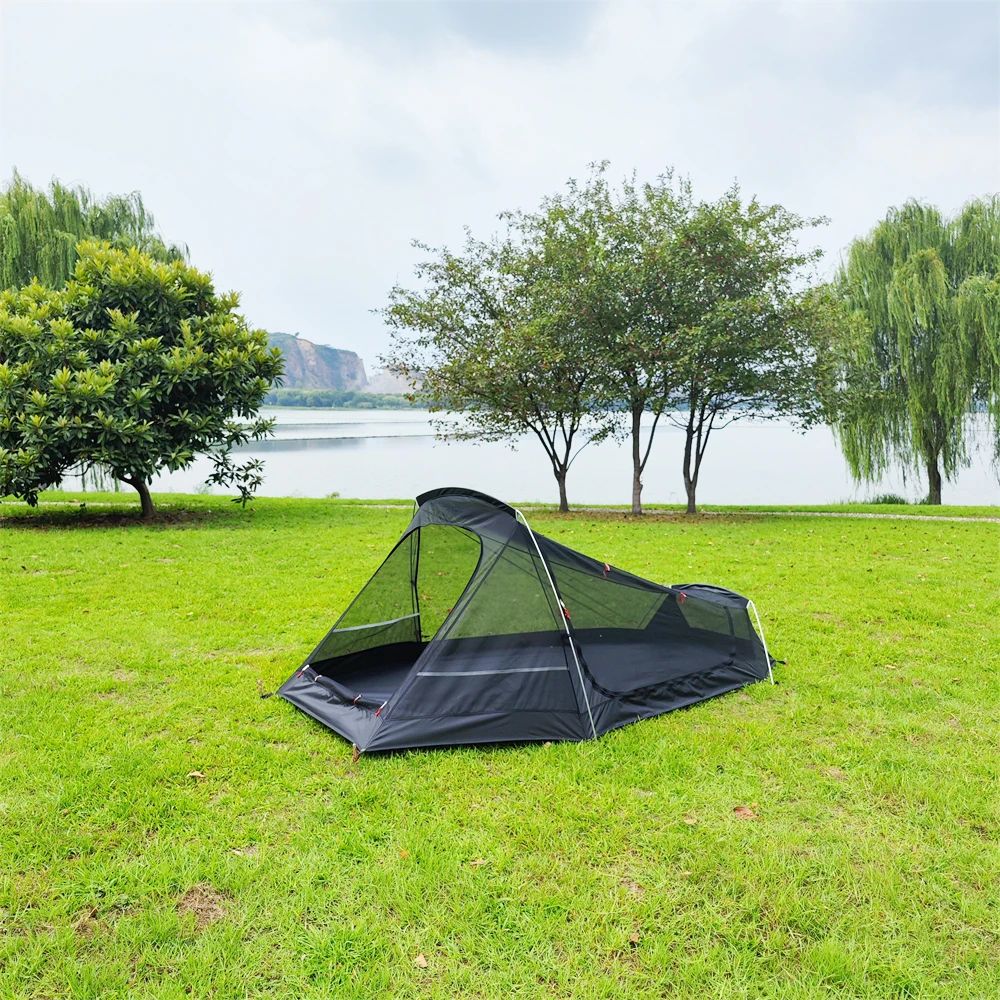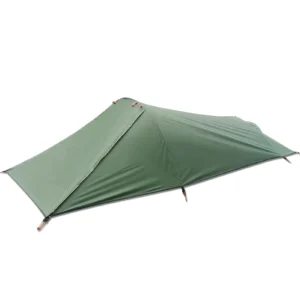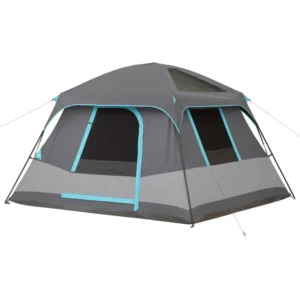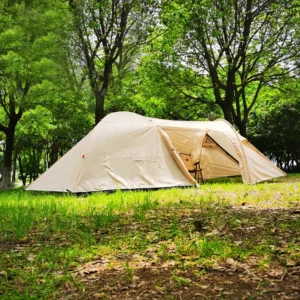Introduction: The Reality of 2-Person Tent Sizing
You’ve seen it in the camping store: a compact tent labeled “2-person” that looks suspiciously small. You wonder if two adult humans could actually fit inside comfortably. This confusion isn’t just you – it’s one of the most common sources of disappointment for new tent buyers.
Let’s be honest right away: while 2-person tents technically fit two people, they’re often too cramped for genuine comfort. This is why experienced campers typically follow the “size up” rule – buying a tent rated for at least one person more than will actually use it.
Before making your purchase, it’s worth understanding several key factors that affect your comfort: actual floor dimensions, gear storage options, and the true meaning of manufacturer specs. At Explore Elements, we’ve tested hundreds of tent configurations across various conditions to understand the real-world implications of tent sizing.
When standard sleeping pads measure 20-25 inches wide and most 2-person tents offer just 48-52 inches of width, the math reveals why many shelter options for two campers feel tighter than expected. Understanding what size tent is good for 2 people means looking beyond simple capacity ratings.
What “2-Person” Actually Means in Tent Marketing
When manufacturers label a tent as “2-person,” they’re using a surprisingly minimal standard: the tent floor must be wide enough to fit two standard sleeping pads side by side – nothing more. This technical definition has little to do with comfort or real-world usability.
The average 2-person tent typically offers:
– Floor dimensions of approximately 50-55 inches wide by 80-90 inches long
– Floor area between 28-35 square feet
– Peak height of 40-48 inches
– Minimal additional space beyond the sleeping area
Standard sleeping pads typically measure 20-25 inches wide by 72-78 inches long. When placed side by side, they occupy almost the entire floor width of a 2-person tent, leaving virtually no extra space for gear or movement.
What these measurements don’t account for:
– Space for entering and exiting the tent
– Room to change clothes or sit up comfortably
– Storage space for backpacks, boots, and other gear
– Buffer space to avoid touching tent walls (which often leads to condensation issues)
Most 2-person camping tents technically meet their capacity rating, but understanding the actual dimensions helps set realistic expectations for your camping experience.
The Truth About Comfort: What to Expect When Two Share a 2P Tent
Imagine this scenario: After a long day of hiking, you and your partner crawl into your new 2-person tent. Immediately, you notice your shoulders press against both the tent wall and your companion. When one person shifts position, the other feels every movement. Your sleeping bags zip together, but any movement causes one person to roll toward the center, further reducing personal space.
Morning brings new challenges. Changing clothes becomes an awkward dance – one person might need to step outside while the other changes, regardless of weather. If rain keeps you tent-bound, the cramped quarters quickly feel claustrophobic.
Gear management presents another significant challenge. With two standard sleeping pads occupying nearly the entire floor, your backpacks, boots, and other essentials have nowhere to go except:
– Under your head as an uncomfortable pillow
– Squeezed between your sleeping pad and the tent wall
– Outside under the vestibule (if your tent has one)
– Back in your vehicle (not an option for backpackers)
The comfort equation changes dramatically depending on your camping style. Car campers might tolerate the discomfort for a night or two, knowing they can retreat to their vehicle if needed. For backpackers on multi-day trips, the confined space becomes increasingly challenging over time.
Rainy weather amplifies these issues significantly. When wet gear must come inside and you can’t easily step outside for more space, the true limitations of a 2-person tent become painfully apparent. Mastering two-person lightweight tent setup becomes crucial to maximize the limited space available.
Tents with adequate vestibule space can partially address gear storage issues, but even the best vestibule can’t fully compensate for limited interior living space.
When a 2-Person Tent Works Fine for Two People
Despite the limitations, there are specific scenarios where a 2-person tent can serve two people adequately:
• Ultralight backpacking trips where minimizing carried weight is the top priority. When every ounce matters over long distances, the weight savings of a smaller tent may outweigh comfort considerations.
• Short overnight trips where you’ll spend minimal waking time in the tent. If you’re only using the tent for sleeping and will be out exploring during all daylight hours, the tight quarters may be tolerable.
• Couples or partners who sleep very close together and are comfortable with limited personal space. Some people naturally prefer closeness during sleep.
• Fair-weather camping where you won’t be confined to the tent during rain or bad weather, and where gear can potentially remain outside overnight.
• Minimalist campers who carry very little gear beyond the essentials, reducing storage space needs.
• Budget-conscious buyers who prioritize lower cost and can adapt to the space limitations.
Many ultralight backpacking tent enthusiasts deliberately choose smaller shelters, accepting the trade-off between comfort and weight. With careful gear selection and organization, experienced minimalist campers can make these spaces work effectively.
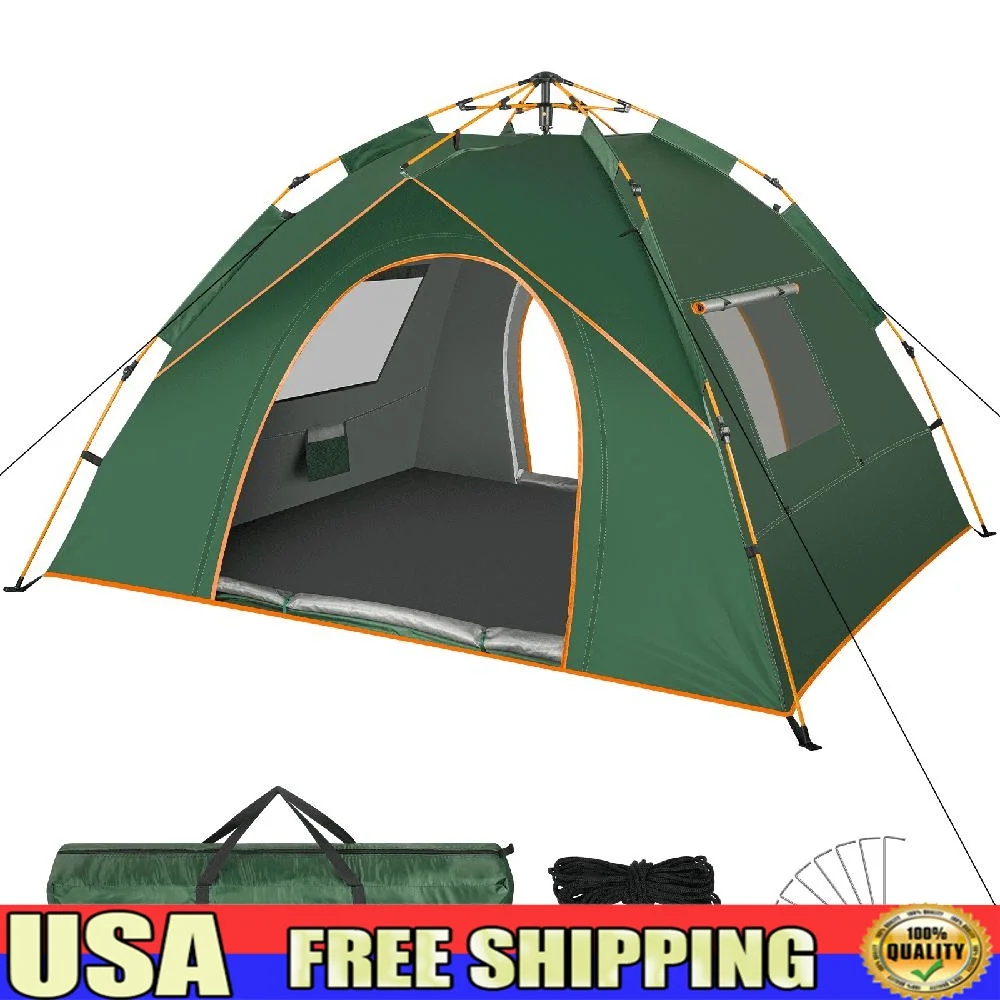
The “Plus One” Rule: Why Many Recommend Sizing Up
The widespread “plus one” rule exists for good reason: for comfortable camping, most experienced outdoors people recommend buying a tent rated for at least one person more than will actually use it. For two campers, this means considering a 3-person tent.
Sizing up to a 3-person tent typically provides:
– 20-30% more floor space (usually an additional 10-15 square feet)
– 6-10 inches of additional width
– Similar length dimensions
– Often higher peak height
– Space for gear storage inside the tent
– Room to move without disturbing your partner
The primary drawbacks are:
– Additional weight (typically 1-2 pounds)
– Slightly larger packed size
– Higher cost (usually $30-100 more)
For car campers, these drawbacks are minimal concerns. For backpackers, the weight penalty requires more consideration, but many find the comfort worth the extra ounces, especially on longer trips or in challenging weather.
Choosing the ultimate compact shelter for two often means balancing these trade-offs against your specific camping style and needs. Many couples find that splitting the components of a 3-person tent between two backpacks offsets the weight penalty while significantly improving their comfort.
Beyond Person Count: Critical Tent Features That Affect Spaciousness
Floor Dimensions
Raw square footage can be misleading. A 30 square foot tent with a rectangular floor plan often provides more usable space than a 30 square foot tent with a tapered design. Look for measurements that specify both width and length, not just total area.
Peak Height
The difference between a 40-inch and 48-inch peak height is dramatic when sitting up or changing clothes. Tents with higher peak heights feel significantly more livable, even if the floor dimensions are identical. Look for where that peak height occurs – some tents have a single high point, while others maintain height across a larger ceiling area.
Wall Design
Tent shape drastically affects usable space:
– Dome tents: Offer good headroom in the center but steep sloping walls that reduce usable floor space
– Cabin tents: Feature more vertical walls that maximize usable floor area and create more livable space
– Tunnel tents: Provide consistent height throughout the length but may have less stability in high winds
Dome camping tents often represent a good compromise between weight, stability, and interior volume, making them popular choices for many campers.
Vestibules
A generous vestibule can compensate for limited interior space by providing protected storage for boots, backpacks, and cooking gear. Some tents offer vestibules on both sides, allowing each camper their own storage and entry/exit point, which significantly improves livability.
Door Configuration
A single door means one person must climb over the other to exit the tent. Dual doors with corresponding vestibules dramatically improve the two-person tent experience, eliminating disturbances when one person needs to enter or exit.
Interior Storage
Well-designed interior pockets, gear lofts, and hanging points allow you to organize small items off the floor, effectively increasing usable space. Look for tents with abundant internal storage options to maximize comfort.
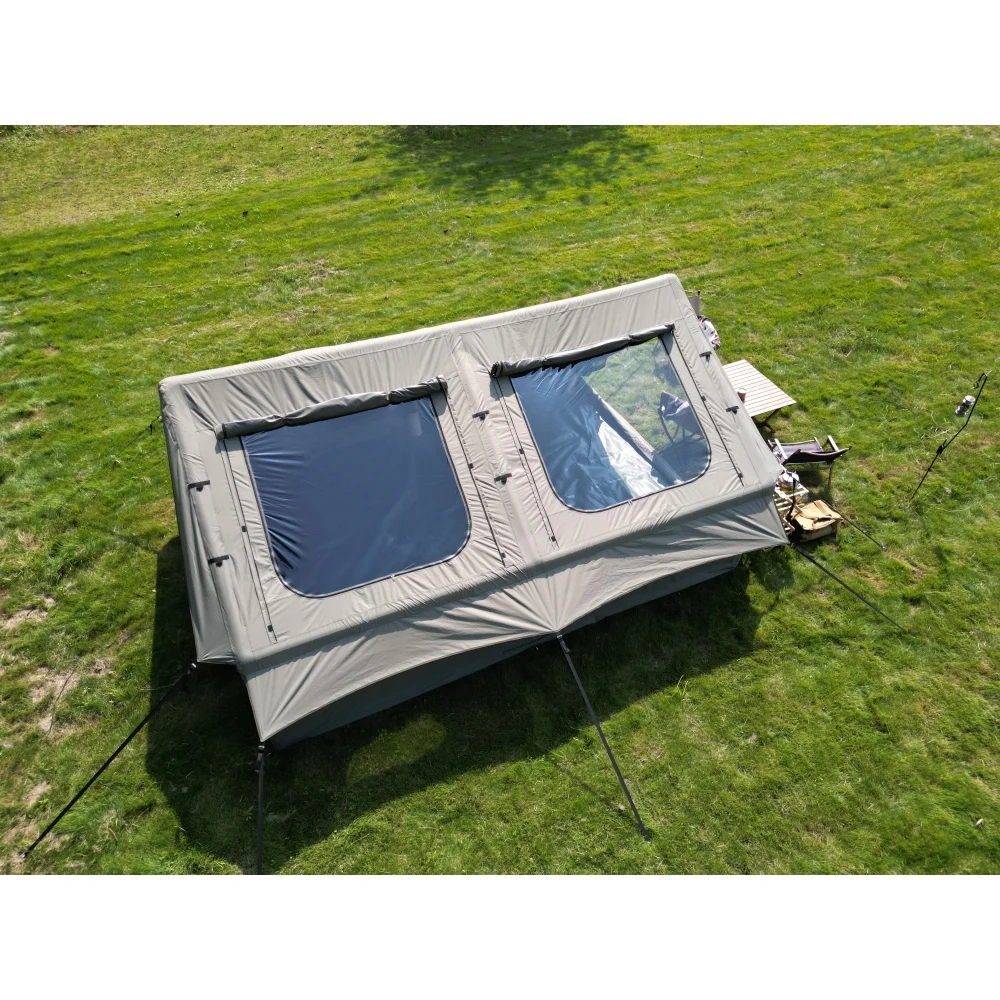
When considering different tent options, many campers worry that larger models will be too heavy for practical use, but advances in materials have made even 3-person tents surprisingly manageable for backpacking.
Comparative Analysis: 2P vs. 3P Tents for Two Campers
| Feature | Typical 2P Tent | Typical 3P Tent | Difference |
|---|---|---|---|
| Floor Area | 28-35 sq ft | 38-45 sq ft | +10-15 sq ft |
| Floor Width | 50-55 inches | 60-70 inches | +10-15 inches |
| Floor Length | 80-90 inches | 85-90 inches | +0-5 inches |
| Peak Height | 40-44 inches | 43-50 inches | +3-6 inches |
| Weight | 3-5 lbs | 4-6.5 lbs | +1-1.5 lbs |
| Packed Size | 6”×18” | 7”×20” | Slightly larger |
| Price | $200-300 | $250-350 | +$50-100 |
| Comfort Level | Snug/Minimal | Comfortable | Significant |
| Gear Storage | Limited/External | Adequate Internal | Substantial |
The experience difference is substantial: in a 2P tent, two campers will be touching shoulders and tent walls, with gear stored primarily in vestibules. In a 3P tent, campers can sleep without constant contact, change clothes more easily, and store key gear inside.
For weekend backpackers, the weight penalty of 1-1.5 pounds is minimal compared to the comfort benefits, especially when weight can be distributed between two packs. For ultralight enthusiasts on longer treks, the calculation may favor the lighter option.
Understanding various camping shelter options for two can help you make an informed choice based on your specific needs and camping style.
Real-World Feedback: What Experienced Campers Say
Experienced campers consistently offer similar perspectives on tent sizing:
“After spending two nights in our 2-person tent during a rainstorm, we immediately upgraded to a 3-person. Those extra 10 inches of width meant the difference between misery and comfort.” – Backpacking forum member
“I’ve used both, and I’ll never go back to a true 2P tent for two people. The weight penalty is trivial compared to the comfort gain.” – Gear reviewer with 15+ years experience
“For ultralight trips where every ounce matters, we still use our 2-person shelter, but we’ve learned to minimize what comes inside with us.” – Thru-hiker couple
“The best tent investment I ever made was ignoring the 2-person label and buying a lightweight 3-person tent instead. I actually enjoy being in the tent now rather than just tolerating it.” – Weekend backpacker
This real-world feedback consistently suggests that while 2-person tents are usable for two people, most campers who have experienced both options strongly prefer the additional space of a 3-person model for two campers.
Decision Factors: Is Sizing Up Right for You?
How long are your typical trips?
For weekend outings, a snug tent might be manageable. For week-long adventures, the extra comfort of sizing up becomes increasingly valuable each successive day.
What’s your camping style?
Ultralight minimalists might prioritize weight savings over space, while recreational campers often prefer comfort over saving a pound.
What’s typical weather in your camping locations?
Campers in rainy regions will spend more time tent-bound, making interior space more important than for those in consistently fair weather areas.
How much gear do you carry?
Photography equipment, extra clothing for variable conditions, or specialized gear all require storage space. More gear means more benefit from sizing up.
What’s your body size?
Taller or broader campers will find standard 2-person tents especially constraining, making the size-up rule even more important.
How do you and your partner sleep?
If you sleep closely together by preference, a 2-person tent might suffice. If you prefer personal space while sleeping, sizing up is essential.
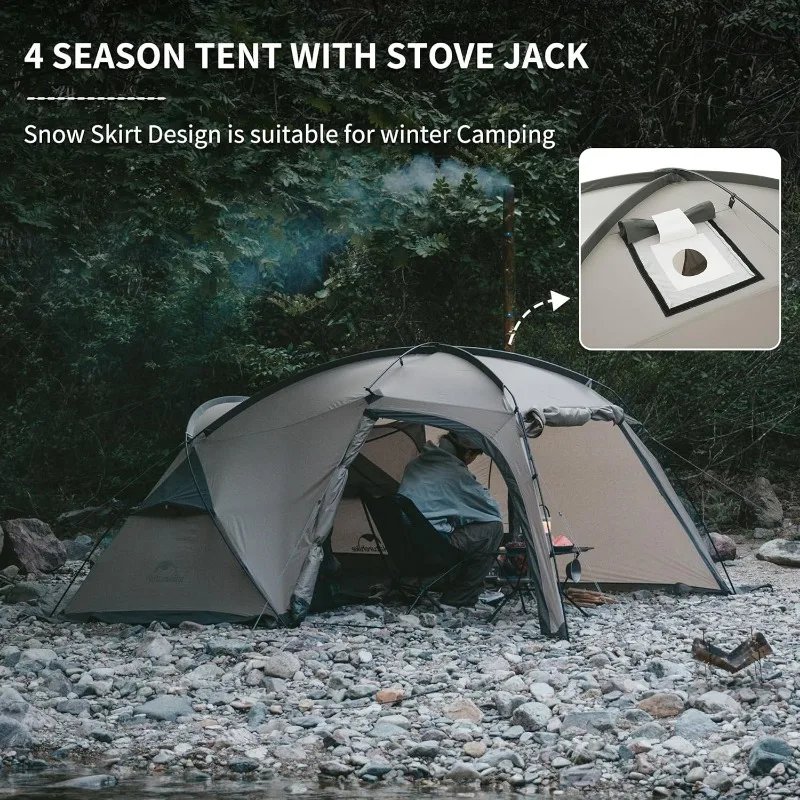
For those concerned about weight, today’s lightweight backpacking tents offer excellent space-to-weight ratios, making the size-up penalty less significant than in previous generations of camping equipment.
Lightweight Backpacking Tent, Ultralight Backpacking Tent, Ultralight Bivy Tent
Ultralight Single Person Camping Tent with Aluminum Poles for 3-Season Backpacking Waterproof DesignPrice range: $94.88 through $326.82 Select options This product has multiple variants. The options may be chosen on the product pageTall / Stand Up Camping Tent, Two Room Camping Tent
$407.93 Select options This product has multiple variants. The options may be chosen on the product pageLightweight Backpacking Tent, Ultralight Backpacking Tent, Waterproof Backpacking Tent
$391.05 Select options This product has multiple variants. The options may be chosen on the product pageCompact Backpacking Tent, Lightweight Backpacking Tent, Waterproof Camping Tent
$335.52 Select options This product has multiple variants. The options may be chosen on the product pageUltralight Backpacking Tent, Ultralight Dome Tent, Winter Camping Tent
Price range: $369.63 through $370.07 Select options This product has multiple variants. The options may be chosen on the product pageCamping Tent with Vestibule, Waterproof Camping Tent
Price range: $407.89 through $479.48 Select options This product has multiple variants. The options may be chosen on the product page
Tips for Making the Most of Your Tent Space (Regardless of Size)
Use compression sacks for clothing and sleeping bags to minimize their packed size.
Establish a dedicated place for small items like headlamps and phones to prevent losing them in the limited space.
Utilize vertical space with gear lofts and internal hanging points for items like lanterns and clothing.
Arrange sleeping pads strategically – sometimes a head-to-foot arrangement provides more shoulder room than sleeping parallel.
Keep clothing organized in stuff sacks rather than loose in the tent.
Use the vestibule effectively for wet gear, boots, and cooking equipment (when appropriate and safe).
Consider leaving backpack frames and other rigid, bulky items outside under rain protection.
Establish entry/exit routines with your tent partner to minimize disruption.
Finding the right compact shelters for two involves both selecting the appropriate size and optimizing whatever space you have with these organizational techniques.
Conclusion: Finding Your Ideal Tent Size
The honest truth about 2-person tents is that while they technically accommodate two sleepers, they rarely provide enough space for a truly comfortable experience for most campers. The industry standard for “2-person” is simply based on fitting two sleeping pads side by side – not on providing a livable, comfortable space.
For most recreational campers, following the “plus one” rule and opting for a 3-person tent for two people will significantly enhance your outdoor experience. The modest weight and cost increases are generally well worth the substantial comfort improvement, especially for trips longer than a single night.
That said, your specific needs should guide your final decision. Ultralight backpackers on long-distance treks might justifiably choose the smaller option, while weekend campers will almost always benefit from sizing up.
Remember that tent comfort significantly impacts your overall camping enjoyment. A good night’s sleep and a comfortable shelter during bad weather can make the difference between a memorable adventure and a disappointing ordeal.

